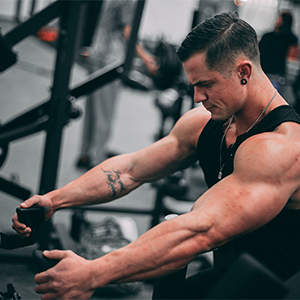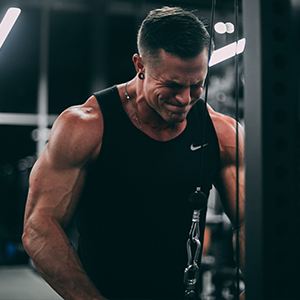
How to train to build muscle when you are over 40 years old
Aging is a natural part of life, but it doesn't have to mean sacrificing your fitness goals, particularly when it comes to building muscle. Despite the changes our bodies undergo as we age, scientific research has shown that individuals over 40 can still achieve remarkable gains in muscle mass with the right approach to training. In this comprehensive guide, we'll explore proven strategies tailored specifically for those entering their 40s and beyond, empowering them to maximize muscle growth and redefine what's possible at any age.
Understanding Muscle Growth:
Before diving into the specifics of training methodologies, it's crucial to grasp the fundamentals of muscle hypertrophy. Muscle hypertrophy occurs when muscle fibers experience stress or tension beyond their usual capacity, prompting them to adapt and grow in size and strength. As we age, there's a natural decline in muscle mass and strength, a phenomenon known as sarcopenia. This decline is influenced by various factors, including hormonal changes, decreased protein synthesis, and alterations in muscle fiber composition. However, research suggests that resistance training can effectively counteract these age-related changes, promoting muscle growth and strength even in older adults.

Key Factors Influencing Muscle Growth:
1. Progressive Overload:
The principle of progressive overload is paramount for continued muscle development. By gradually increasing the demands placed on muscles over time—whether through weight, reps, or intensity—individuals can stimulate ongoing growth and adaptation. 1
2. Nutrition:
A balanced diet with adequate protein intake supports muscle repair and growth. Aim for 1.6-2.2 grams of protein per kilogram of body weight per day, sourced from lean meats, fish, eggs, dairy, and plant-based options. In addition to protein, ensure your diet provides sufficient calories from nutrient-dense foods, including carbohydrates and healthy fats, to fuel workouts and support overall health. Timing of protein intake, especially around workouts, can further enhance muscle repair and growth. Additionally, staying hydrated is crucial, as dehydration can impair performance and recovery. 2
3. Recovery:
Proper rest, sleep, and recovery strategies are vital for optimizing muscle adaptation and minimizing the risk of overtraining or injury. Aim for 7-9 hours of quality sleep per night to support recovery and hormone regulation. Incorporating active recovery activities like walking or yoga on rest days can promote blood flow and reduce muscle soreness. Additionally, prioritize mobility and flexibility exercises to maintain joint health and range of motion, reducing the risk of injuries. 3

Training Strategies for Muscle Building After 40:
1. Resistance Training:
Resistance training, encompassing both compound and isolation exercises, forms the foundation of muscle-building routines for individuals over 40. Compound exercises such as squats, deadlifts, and bench presses engage multiple muscle groups simultaneously, maximizing efficiency and effectiveness. Isolation exercises can target specific muscles to address imbalances or weaknesses. Aim for a combination of moderate to heavy weights with sufficient volume to induce muscle hypertrophy. 4
2. Focus on Form and Technique:
As we age, prioritizing proper form and technique becomes increasingly important to prevent injury and ensure optimal muscle activation. Avoiding excessive momentum or load and maintaining controlled, deliberate movements during exercises are critical for maximizing muscle engagement and minimizing strain on joints and connective tissues.
3. Incorporate Periodization:
Periodization involves varying training variables such as volume, intensity, and frequency over time to optimize performance and prevent plateaus. Structuring training cycles with periods of higher and lower intensity allows for adequate recovery and adaptation, enhancing long-term progress. 5
4. Embrace Functional Training:
Functional training emphasizes movements and exercises that mimic real-life activities, improving overall functional fitness. Integrating functional movements such as squats, lunges, and core stabilization exercises not only enhances muscle strength but also enhances mobility, stability, and balance, which is particularly beneficial as we age. Additionally, incorporating High-Intensity Interval Training (HIIT) alongside resistance training can boost metabolism, burn fat, and preserve lean muscle mass.
5. Prioritize Recovery and Regeneration:
Recovery is paramount for muscle growth and well-being, especially for individuals over 40. Incorporate rest days into your training schedule, prioritize quality sleep, and consider implementing recovery modalities such as foam rolling, stretching, massage, and contrast baths to reduce muscle soreness and enhance recovery. 6
Hormonal Optimization:
Hormonal changes associated with aging, such as declining testosterone levels, can impact muscle growth. Consult with healthcare professionals to address any hormonal imbalances that may affect muscle building. Lifestyle habits such as regular exercise, stress management, adequate sleep, and a balanced diet rich in micronutrients can support hormonal health. 7
Conclusion:
Age should never hinder your ability to achieve your fitness goals, including building muscle and improving strength. By incorporating evidence-based training strategies, prioritizing recovery, and maintaining a healthy lifestyle, individuals over 40 can unlock their full potential and redefine what's achievable in terms of muscle growth and overall fitness. Embrace the journey, celebrate progress, and enjoy the benefits of a stronger, healthier you, regardless of age. Here's to embracing the power of fitness and living life to the fullest, now and for years to come.





Leave a comment